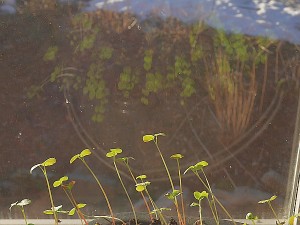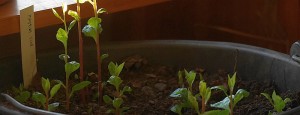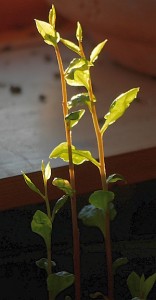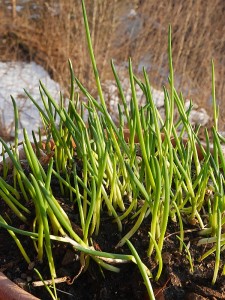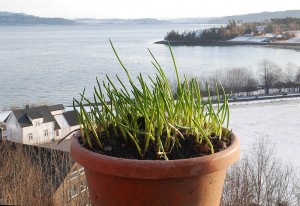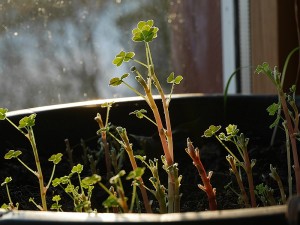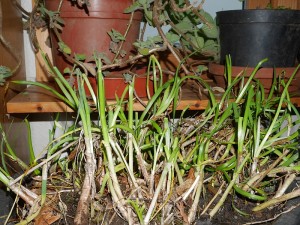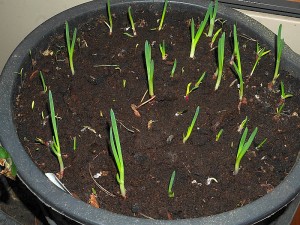Somebody asked me to show how I force veggies indoors in winter, so here you have a link to a short video showing what is available at the moment!
At this time of year, most of our leafy greens used in salads and cooking are either harvested from the forcing pots shown in the video or directly from the cold cellar under the house. Here is a mixture of perennials, biennials and annuals. Still looking for a good perennial chicory for forcing. See the list of plants shown below.
Follow the link to the video.
Witloof Festive Chicory (sikori / julesalat)
Witloof Væres Venner mix (my own selection from the community garden based on several varieties from various gene banks)
Hristo’s onion (Allium flavescens x nutans?)
Kandahar cress (karse) from the Experimental Farm Network (seed harvested in the community garden)
Wild buckwheat / vill bokhvete (seed harvested in The Edible Garden) Garlic bulbil sprouts / spirte hvitløk bulbiller
Nodding onion / prærieløk (Allium cernuum)
Dandelion / løvetann
Tag Archives: Garlic bulbils
February salad
Lunch salad had the following ingredients;
From the garden:
Allium scorodoprasum / sand leek / bendelløk (shoots)
Allium cernuum / nodding onion / prærieløk (bulbs and leaves)
Hablitzia tamnoides / Caucasian spinach / stjernemelde (shoots)
From the cellar:
Brassica oleracea / perennial kale / flerårig kål (new leaves)
Cichorium intybus “Witloof” / chicory / sikori (shoots)
Taraxacum spp. /dandelion /løvetann (blanched cellar shoots)
Apium graveolens / celery / selleri (new and old leaves from stored celery plants)
Brassica rapa / turnip / nepe (roots)
Brassica rapa / turnip / nepe (leaf shoots)
Daucus carota / carrot / gulrot
From the living room:
Allium nutans (forced shoots)
Allium sativum / garlic / hvitløk (forced bulbils)
Taraxacum spp. / dandelion / løvetann (forced green leaves)
(served with feta cheese, olive oil, olives, salt and pepper)

Record warmth and record early shoots
With record temperatures recorded in this area at the moment after a mild winter when all the cold spells coincided with good snow cover means that the soil was hardly frozen all winter and garlic shoots had appeared a few days ago at least two weeks earlier than I’ve recorded before and I also found the first ground elder (skvallerkål) shoots – welcome back my friend and, be warned, I will be eating you until the autumn!
It’s the marbled purple stripe garlic varieties that I grow that appear first: Aleksandra, Estonian Red, German Hardneck and Valdres!
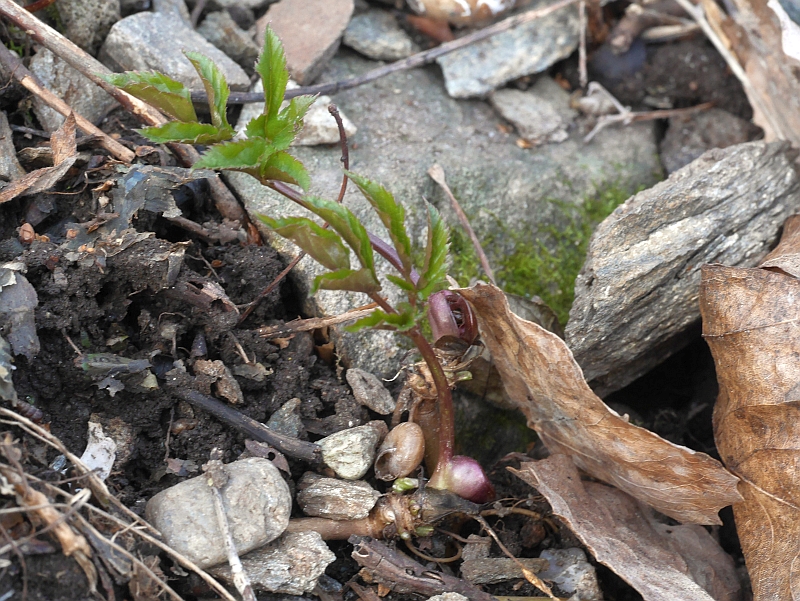
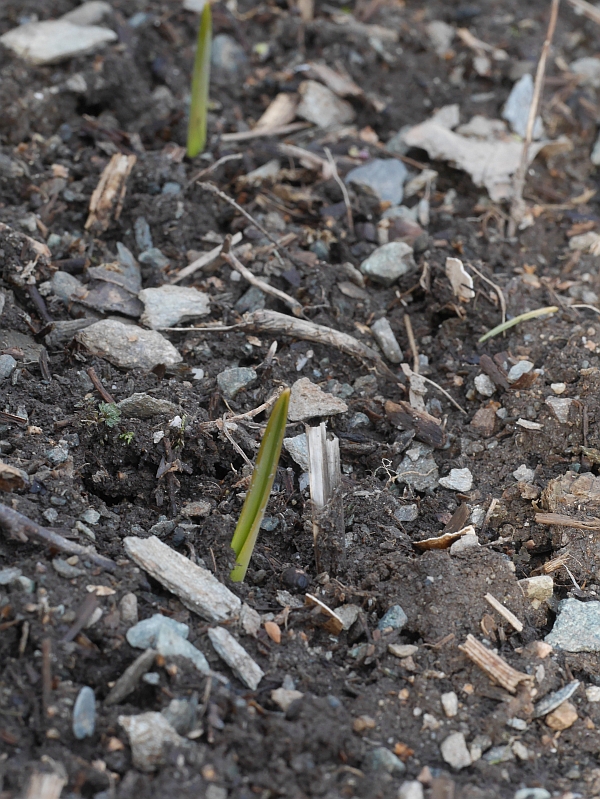
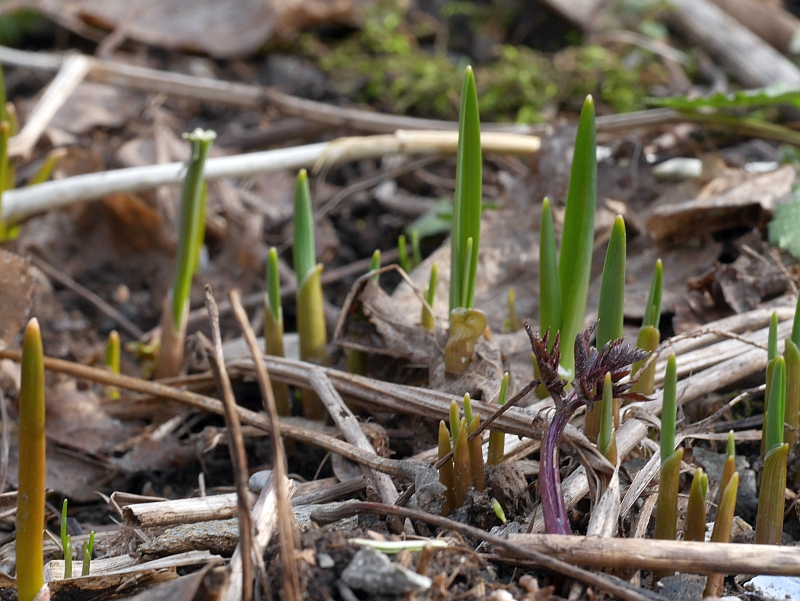
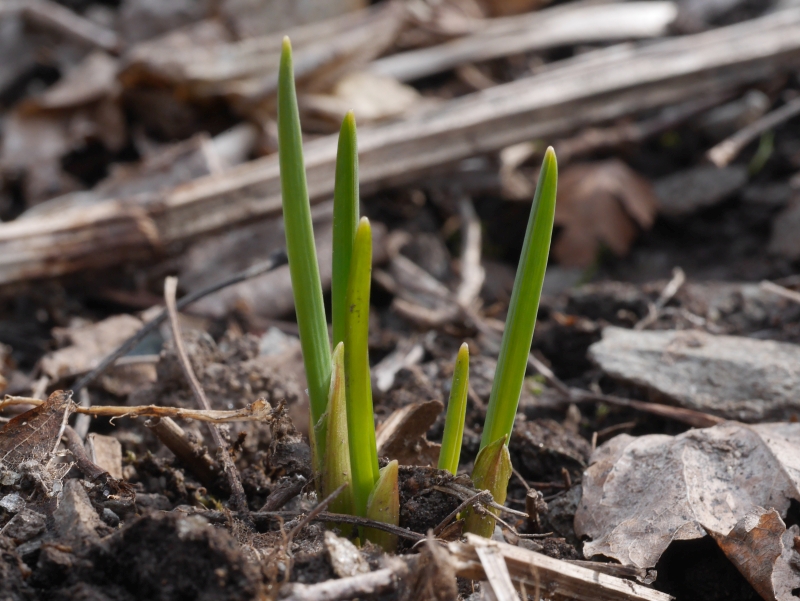
Dandelion shoots in the living room
This bucket was planted in the autumn and stored until now in the cellar. Within a few days of bringing it up into my living room there are usable shoots. Garlic bulbil shoots are seen behind.
Nowadays, I LOVE the taste of dandelion although in my youth I found it so bitter that I couldn’t understand why anyone would want to eat it. I think the reason is a combination of giving up eating sugar and getting accustomed to eating bitter plants. In addition, nobody ate a dandelion salad alone. The following box from my book describes various methods og de-bitterizing dandelions if you want to benefit from one of the most nutritious and valuable plants on the planet but find the taste too bitter:
Indoor edible shoots: my living room is alive!!

